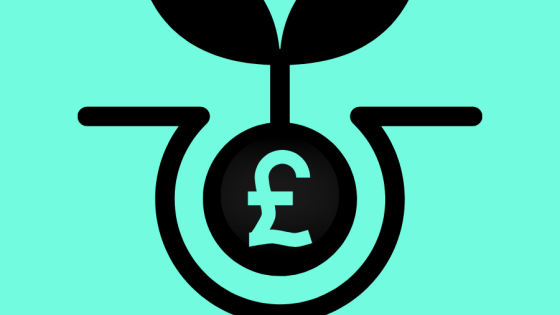Analyst Bill Hubard provides insights for us
11 May 2020
The key to unlocking lockdown and what's to comeCategories & Tags
The British Government said non-essential retailers would not go back to work until June at the earliest while other sectors will not go back to work until July at the earliest, Foreign Secretary Dominic Raab said on Monday. "There's the other changes for things like non-essential retail and people going back to school, particularly primary school, which won't start until the earliest on the first of June, subject to conditions," Raab said.
"Starting from the 4th of July at the very earliest, those other sectors where they are inherently more difficult because people are mixing together and it's difficult to maintain the social distancing, we wouldn't be able to say ... that we would start them at least until the 4th of July."
While economic activity probably contracted by at least 30% from February to April, current economic activity is likely less subdued. While a fully-fledged recovery probably cannot begin until – and if – the UK begins to open up non-essential retailers some 3 weeks from now, a very (very) tentative recovery probably started in the last couple of weeks. The UK government had apparently suggested to some major firms that had put the shutters up that they had gone further than the restrictions had required and that they could reopen and remain compliant with existing restrictions.
Coinciding with this, I have noticed a pick up in economic activity in my neighbourhood in the past fortnight. Residential construction and renovation – which had completely stopped for a while – has restarted (for once I am pleased to have noisy neighbours) while many cafes, shops and restaurants that were previously completely shut are now providing takeaway services. Yesterday’s announcement can only reinforce these trends. Probably, the economic data will likely show a small improvement in activity in May compared to April already.
Risks to the rebound: Although the recovery will be slow at first and will depend a lot on whether the government can lift restrictions in line with the timetable outlined by Johnson yesterday, with luck, the UK economy is already past the worst of the economic fallout from the pandemic. The aggressive and swift action of HM Treasury and the Bank of England, and the decent shape of economic fundamentals head-ing into the recession, suggests that major structural damage from the pandemic that could lower potential growth in the future will be limited. Nonetheless, I feel the UK faces 4 major threats that tilt the risks to the general medium-term forecasts of a 9.0% contraction in 2020 followed by a 7.0% rebound in 2021 to the downside:
1. A major second wave that requires renewed lockdowns: The UK is still at a VERY early stage in its fight against the virus. Until mass vaccination is possible or until enough people have become immune that the virus begins to dissipate naturally – neither are in near-sight – the government will concentrate on managing the spread of the virus in a way that prevents the NHS from becoming overwhelmed and protects the most vulnerable. With still-patchy virus statistics and a roughly 2-week lag between policy changes and virus trends, the steps to open up the economy will be taken cautiously. In case of a renewed major virus spike, the government probably will not hesitate to re-impose some elements of the lockdown.
2. Pandemic anxiety weighs on animal spirits: Learning to live with the virus could involve semi-permanent disruptions to daily life well into next year. A sense of anxiety that lasts until the virus has run its course could continue to weigh on consumer demand and business risk appetites. Virus-related worries may lead to an initially anaemic near-term recovery in spending, investment and hiring. In a worst case scenario, household precautionary saving may remain so elevated that the recession continues even after the harshest elements of the lockdown are lifted.
3. A premature unwinding of fiscal support: The coronavirus recession is VERY expensive. Public sector debt may surge by at least 20% of GDP, perhaps even more. Eventually, fiscal policy will need to be returned to a sustainable path. However, doing so will only be safe once private demand is on a sustained rebound. If private spending remains depressed even after the lockdowns are eased, the government should be prepared to continue deficit spending until a recovery takes hold. That Chancellor Rishi Sunak is planning to gradually phase out the highly effective employment subsidy scheme rather than to have a cliff-edge at the end of June as initially planned suggests that the government will continue to take the right approach to fiscal policy. Nevertheless, in the UK and elsewhere, we need to watch the risk that deficit hawks and other such ideologues who hold antiquated views on economic policy encourage governments to pull back support before economies are ready.
4.<span> </span>A disorderly exit from the single market: I expect the UK to exit the single market and customs union in an semi-orderly fashion at the end of 2020 but with NO free trade agreement (FTA) ready for the beginning of 2021. However, the UK-EU trade talks are NOT going well, to put it mildly. An extension to the transitional period seems HIGHLY unlikely. The UK is adamant that it will leave the single market and customs union at the end of 2020. The UK and the EU are so far apart on many political sensitive issues – including Northern Ireland, fishing rights, level playing field provisions. We thus we need to pay more attention to the risk of disorderly exit than before. After the pandemic, this is the B-I-G threat facing the UK. Noisy negotiations could weigh heavily on household and business confidence in H2 while a lack of comprehensive trade agreement with the EU will constrain supply potential over the medium-term. In a worst case scenario, a disorderly exit from the single market could tip the UK back into recession in early 2021.
Written by Bill Hubard
News & Resources

Avoiding the car fuel benefit charge
More

Selling your UK home and living abroad
More

IHT treatment of unused pension funds and death benefits
More

VCT and EIS changes
More

When are employers required to provide security to HMRC?
More

Budget Summary November 2025
More

Claim flat rate expenses for work clothing and tools
More

VAT relief for commercial samples
More

